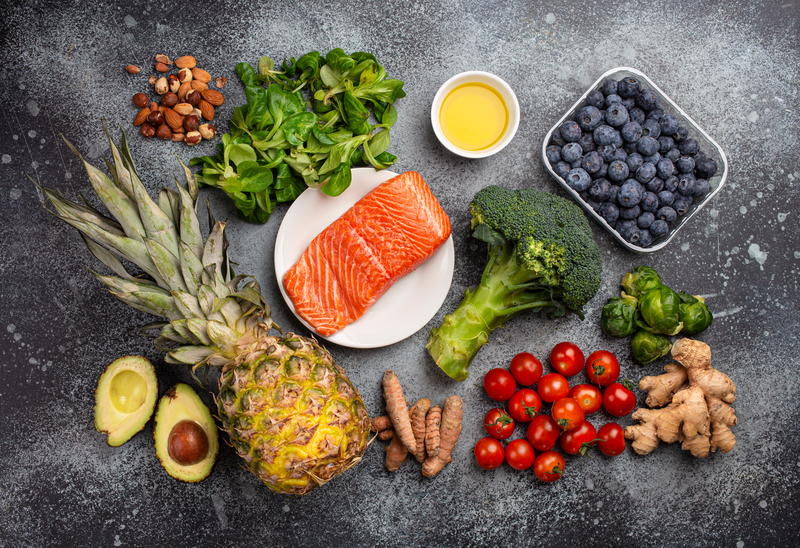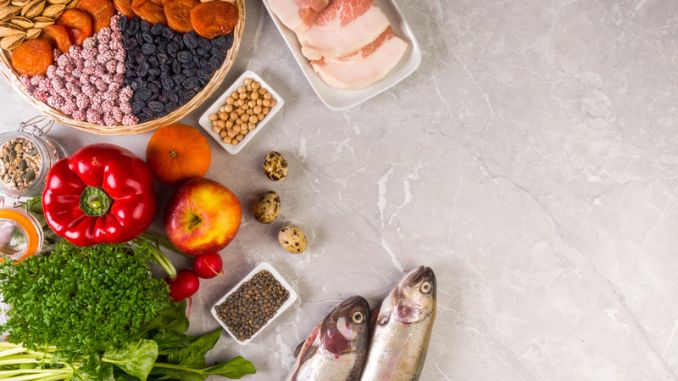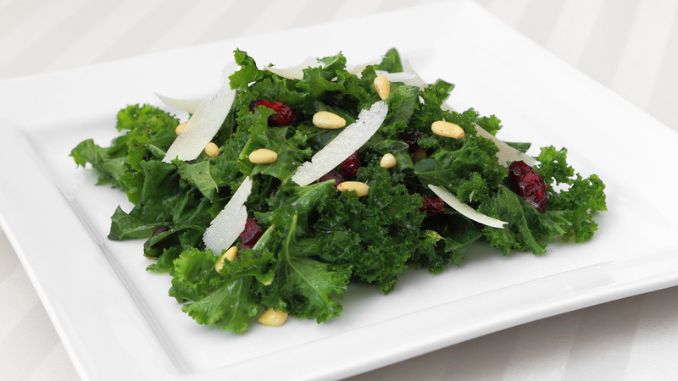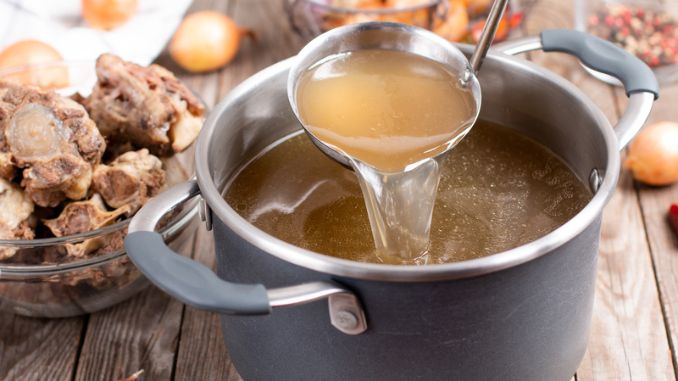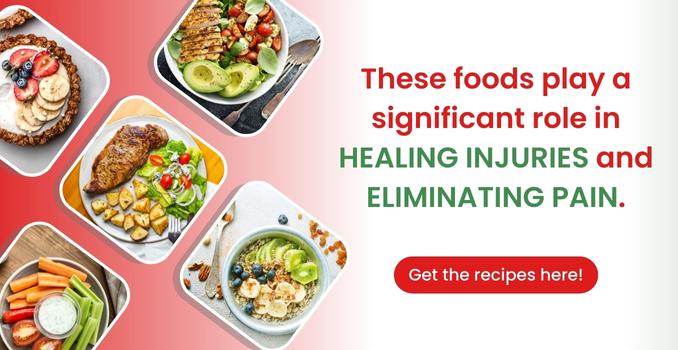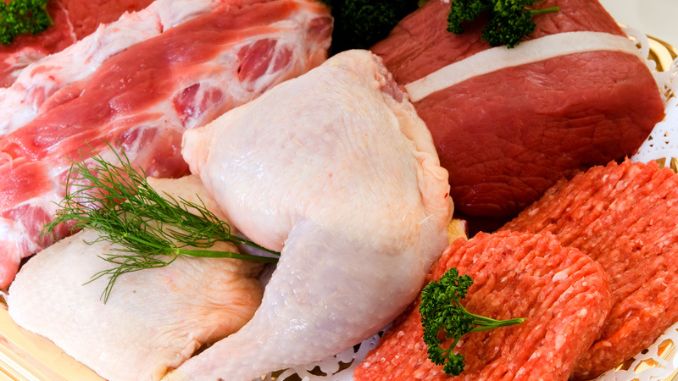Besides swearing softly under your breath, what happens when you stub your toe?
Inflammation occurs as your body tries to protect itself from injury—which is why your injured little pig is red, swollen, painful, and warm. During an inflammatory response, the body produces immune cells (including cytokines and white blood cells) faster and sends them to the area of concern for damage control.
The same type of response happens when you get bit by a mosquito, get a paper cut, get a sunburn, or fight off the common cold.
In this way, inflammation is a normal part of healthy immunity.
But sometimes, even the best systems go awry.

When a Good Thing Goes Bad: The Problem with Chronic Inflammation
While acute inflammation is intended to help fight off injury or infection, it can become problematic when and if it occurs more systemically and chronically within the body. Widespread inflammation has been linked to a huge number of chronic diseases, including arthritis, Alzheimer’s disease, heart disease, Parkinson’s disease, obesity, asthma, psoriasis, inflammatory bowel disease (IBD), and cancer.
It may be helpful to think of chronic inflammation as a pile of slow-burning embers spread out within the body: that is, it’s still potentially dangerous even without the obvious flame of an acute inflammatory response and can easily cause some problems to ignite or flare up. Unlike acute inflammation, which is shorter (think hours to days), chronic inflammation can last for years.
Symptoms of Chronic Inflammation
Unlike the swelling, tenderness, and redness that occur during an acute inflammatory process, symptoms of chronic inflammation can be a bit more subtle:
- Increased abdominal fat (the much-maligned “spare tire” or “beer belly”)
- Generalized fatigue
- Digestive problems, including gas, constipation, diarrhea, and bloating
- Red, itchy, blotchy, and sensitive skin
- Puffiness under the eyes
- Sneezing, coughing, runny nose, and other allergy symptoms anti inflammatory Foods List
- Joint pain
- Erectile dysfunction in men and frequent yeast infections in women.
In addition to symptoms the person feels, clinical signs of chronic inflammation (which doctors can look for on lab tests) include the presence of inflammatory biomarkers in the blood. These molecules and compounds, including C-reactive protein (CRP), homocysteine, TNF alpha, and IL-6, are like little “tells” produced by the body when excessive inflammation occurs.
High blood sugar levels are a hallmark sign of inflammation. They can lead to the production of advanced glycation end products (AGEs), pro-inflammatory compounds that accelerate aging and cause oxidative damage to your cells (akin to rust on metal).
But understanding what chronic inflammation looks like—and the potential issues it can lead to—is just one part of the issue. Understanding what causes it in the first place is essential for taking back control of our health.
Common Foods Which Cause Inflammation
So much of what can be found in the standard American diet today can be directly linked to the rising rates of chronic inflammation. The following foods are considered pro-inflammatory and, when consumed regularly, can lead to a variety of health issues:
- Sugar and refined carbohydrates (like white bread, pasta, and candy)
- Foods containing trans fats
- Vegetable oils (which can introduce too many omega-6 fatty acids into the body)
- Alcohol
- Processed meats
And It’s Not Just Your Food
Without a doubt, the food you eat can be the main culprit of unwanted and excessive inflammation in your body (the good news is, this is an easy-to-influence factor, as we’ll learn about shortly). However, the medical community is keen to point out that other non-food causes of inflammation exist, including stress, sedentary behavior, cigarette smoking, excessive weight and obesity, and even certain medications (including oral contraceptives).
The lesson here is simple: if you have a chronic health condition or are concerned about systemic inflammation, look at your entire lifestyle—not just your plate. Chances are, there are a few things you can change or modify (such as managing your stress better through sleep and exercise) to help maximize your overall health.
That said, improving your diet remains an essential piece of the puzzle.
An Evidence-Based Diet Plan to Reduce Inflammation Naturally
While natural anti-inflammatories include everything from exercise to meditation, the research tends to point to your fridge when finding the most effective way to reduce excessive or chronic inflammation.
So, to take a hint from Hippocrates, let thy food be thy medicine. And fortunately, science has a lot to offer regarding selecting the right “prescription.”
Top 3 Anti-inflammatory Diet Principles to Follow
- Get more fiber. The Arthritis Foundation suggests that getting plenty of fiber in the diet can help reduce the severity and frequency of symptoms associated with joint inflammation. The same benefits can likely be extended to other areas of your body potentially affected by chronic inflammation. You should aim for around 25 grams of fiber per day.
- Cut out sugar. Addition by subtraction, as it were. By removing added sugars from your diet, you’re effectively eliminating a major source of the problem.
- Stick with the superfoods. In general, eating a “cleaner” diet with quality sources of animal protein and veggies will help improve your health. Think of it as a dietary insurance policy. Need some inspiration? Keep reading.
Anti-Inflammatory Diet Food List
The anti-inflammatory diet food list includes the following foods, herbs, spices, and compounds. A diet intended to soothe and control levels of inflammation in the body.
These foods are easy to locate at pretty much any grocery store, farmer’s market, or restaurant, allowing you to maintain a non-inflammatory diet no matter where you are:
1. Green tea
Compounds are known as polyphenols, which help fight free radicals in the body and load this tea.
2. Cold-water fish
Fish like sardines and salmon are rich in omega-3 fatty acids, which have a powerful anti-inflammatory effect on the body. Aim to eat fish at least 3-4 times per week.
3. Cruciferous veggies
Broccoli, Brussels sprouts, mustard greens, boy Choy, cabbage, and cauliflower all pack a powerful punch thanks to their high concentration of anti-inflammatory phytonutrients.
4. Allium veggies
Alliums are a type of plant that includes onions, garlic, leeks, and scallions. These are loaded with antioxidants and are excellent for fighting inflammation and protecting against cancer and other health issues.
5. Watermelon and berries
Certain fruits, such as watermelon, strawberries, blueberries, green leafy vegetables, allium vegetables, and cruciferous vegetables, can help mitigate the negative ramifications of chronic inflammation thanks to their abundant vitamins and nutrients. Your goal should be between seven to nine servings of fruits and veggies per day.
6. Olives and olive oil
The famous Mediterranean diet, known for being anti-inflammation friendly, staples extra virgin olive oil. Other awesome plant-based fat sources include avocados, sesame, and coconut oil.
7. Bone broth
Rich in minerals, vitamins, and nutrients, bone broth truly boosts health and provides a high-quality source of protein.
8. Certain spices
Rosemary, turmeric, curcumin, cayenne pepper, ginger, nutmeg, cloves, and oregano are a few of the most effective herbs. These spices can reduce or inhibit the biochemical processes of inflammation.
9. Fermented foods
Apple cider vinegar, sauerkraut, kombucha kimchi, and kefir contain antioxidants, probiotics, enzymes, and B vitamins.
10. Whole grains
Complex carbohydrates such as brown rice and quinoa help reduce inflammation, likely due to their high fiber content. If you do not do well with grains (especially ones containing gluten), know that you can still meet your fiber needs with veggies.
Some Go-To Anti-inflammatory Diet Recipes
An anti-inflammatory diet food list gives a way of eating that can help reduce inflammation. The foods which naturally promote anti-inflammation in the diet are tasty and versatile. There are countless ways to get more of them into your diet. Feel free to create your recipes, or try some of the following if you’re looking for a bit of inspiration:
- Roasted Broccoli with Garlic and Mustard
- Homemade Sauerkraut
- Roasted Wild Salmon with Rosemary and Lemon
Conclusion
Chronic inflammation is real, it’s common, and it’s a problem. It can act like a charlatan, a man behind the curtain if left unaddressed. A silent assassin is slowly robbing you and your loved ones of your health.
But no need to sound dramatic.
The great news is that your lifestyle can control chronic inflammation.
So, meditate more. Move more. Sleep more. Drink more water. And lastly, adopt a more anti-inflammatory diet—it’s super delicious, too.

Rick Kaselj MS, is a leading kinesiologist and injury specialist as well as co-creator of the best-selling Unlock Your Hip Flexors program. Rick creates exercise programs that help people heal injuries and eliminate pain, so they can go back to living a full, active, healthy life.

